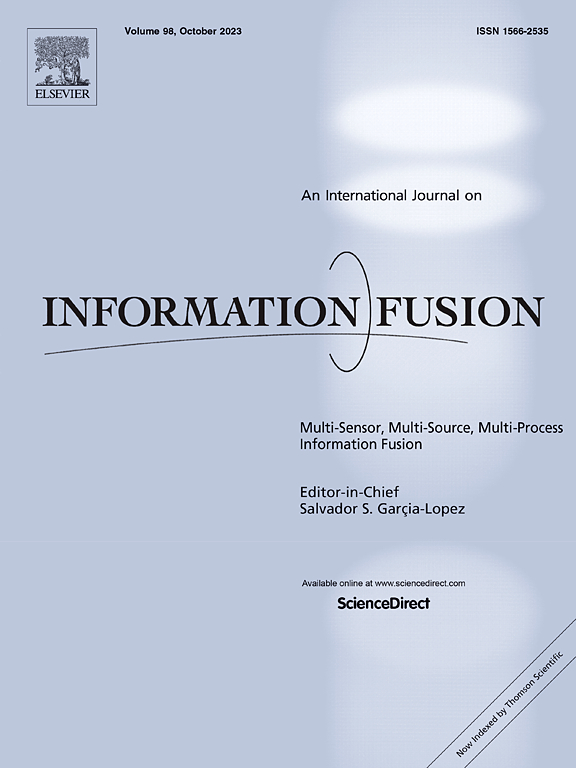LLM-DG: Leveraging large language model for enhanced disease prediction via inter-patient and intra-patient modeling
IF 14.7
1区 计算机科学
Q1 COMPUTER SCIENCE, ARTIFICIAL INTELLIGENCE
引用次数: 0
Abstract
Existing methods play a crucial role in clinical decision support by enabling disease prediction and personalizing healthcare based on swiftly accumulated electronic Health Records (EHRs). However, these methods often overlook multi-source data integration by relying solely on specific domain knowledge and fail to model intricate relationships among patients as focusing on inter or intra-patient relationships, respectively. To address these limitations, we propose LLM-DG, a multi-level health event prediction framework enhanced by large language models (LLMs). Specifically, LLM performs semantic enhancement for patient and discharge summary representations and injects domain knowledge into disease modeling, improving prediction accuracy and robustness. Moreover, LLM-DG synchronously models inter-patient and intra-patient relationships by capturing high-order patient correlations and fusing dynamic and static patient features. At the inter-patient level, LLM-DG clusters patients based on LLM-enhanced features, identifying similar health trajectories. At the intra-patient level, it models disease evolution characteristics through a dynamic graph and extracts textual information from LLM-enhanced discharge summaries using a text encoder. Experiments on MIMIC-III and MIMIC-IV datasets demonstrate that LLM-DG significantly outperforms state-of-the-art models, achieving a 12.39% improvement in on the diagnosis prediction task of the MIMIC-IV dataset. Overall, LLM-DG demonstrates strong potential in complex healthcare environments by integrating patient histories and cross-patient health patterns, highlighting its applicability in clinical decision support and personalized treatment planning.
LLM-DG:利用大型语言模型,通过患者间和患者内部建模来增强疾病预测
现有方法通过基于快速积累的电子健康记录(EHRs)实现疾病预测和个性化医疗保健,在临床决策支持中发挥着至关重要的作用。然而,这些方法往往仅仅依赖于特定的领域知识,忽视了多源数据的集成,而不能分别关注患者之间或患者内部的复杂关系,从而无法对患者之间的复杂关系进行建模。为了解决这些限制,我们提出了LLM-DG,一个由大型语言模型(llm)增强的多层次健康事件预测框架。具体而言,LLM对患者和出院总结表示进行语义增强,并将领域知识注入疾病建模,提高预测精度和鲁棒性。此外,LLM-DG通过捕获高阶患者相关性和融合动态和静态患者特征,同步建模患者之间和患者内部的关系。在患者间水平,LLM-DG根据llm增强的特征对患者进行分组,确定相似的健康轨迹。在患者内部层面,它通过动态图形建模疾病演变特征,并使用文本编码器从llm增强的出院摘要中提取文本信息。在MIMIC-III和MIMIC-IV数据集上的实验表明,LLM-DG显著优于最先进的模型,在MIMIC-IV数据集的诊断预测任务上实现了12.39%的w-F1改进。总体而言,LLM-DG通过整合患者病史和跨患者健康模式,在复杂的医疗保健环境中显示出强大的潜力,突出了其在临床决策支持和个性化治疗计划方面的适用性。
本文章由计算机程序翻译,如有差异,请以英文原文为准。
求助全文
约1分钟内获得全文
求助全文
来源期刊

Information Fusion
工程技术-计算机:理论方法
CiteScore
33.20
自引率
4.30%
发文量
161
审稿时长
7.9 months
期刊介绍:
Information Fusion serves as a central platform for showcasing advancements in multi-sensor, multi-source, multi-process information fusion, fostering collaboration among diverse disciplines driving its progress. It is the leading outlet for sharing research and development in this field, focusing on architectures, algorithms, and applications. Papers dealing with fundamental theoretical analyses as well as those demonstrating their application to real-world problems will be welcome.
 求助内容:
求助内容: 应助结果提醒方式:
应助结果提醒方式:


